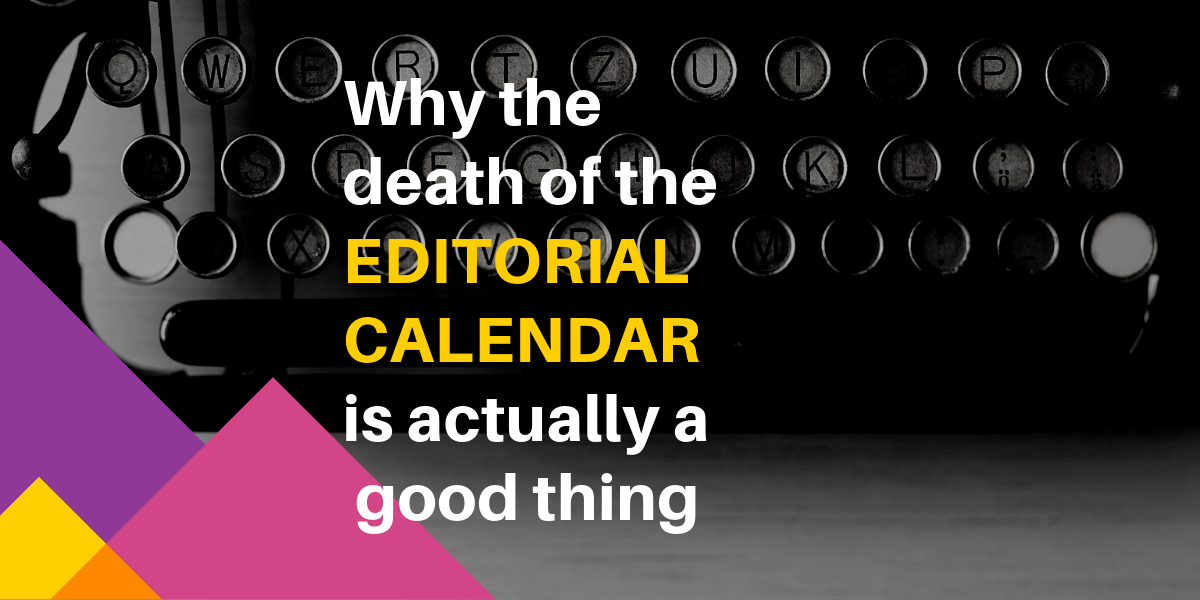Thick binders full of editorial calendars – “ed cals” to insiders – from various publications were once a mainstay of any PR pro’s toolkit. Even when I was getting my start in the industry nearly 10 years ago, the editorial calendar was a vital part of every client’s PR strategy.
Each fall, as soon as the apple cider started flowing (back in the simpler pre-PSL days), signaled the start ed cal season. I remember spending hours upon hours with the other account coordinators and executives calling dozens upon dozens of newsrooms, hunting down their editorial plans for the upcoming year. Once we got our hands on an editorial calendar, we’d sift through it highlighting potential opportunities for any of our clients – and into the binder it would go for future pitching.
This was time well spent, as it gave us insight into how we can tailor our pitches to meet various publications’ editorial needs. These were often easy “gets” for client coverage, but now they’ve become relics of the past.
The changing media landscape has made the editorial calendar irrelevant
Digital media has gutted traditional newsrooms. Between 2010 and 2016, full-time newsroom staff shrunk by 39 percent in the U.S. At the same time, reporters are expected to churn out more content to stand out in a highly competitive market.

The realities of today’s on-demand 24/7 news cycle has diminished the need for ed cals. The first one to the story often gets the eyeballs, so publications are increasingly prioritizing breaking news coverage over more long-term editorial planning. Those that still create annual ed cals (and there are a few – mostly in the financial services vertical) often include vague descriptions so as not to give their competitors a heads up, making story targeting increasingly challenging.
Lately, ed cals have been more of a tool for advertisers rather than editorial, but even that’s changing as brands increasingly rely on paid social media campaigns and highly targeted programmatic ads appealing to certain demographics and search interests.
Simply put: the time spent identifying editorial calendars, tracking them, and chasing editors to determine the stories angles they’re working on is simply not delivering the same ROI it used to.
The death of the editorial calendar and the re-birth of the relationship
So, why is the death of the ed cal a good thing?
The biggest benefit is that it gets us back to our roots: building relationships. This should already be at the core of everything good PR pros do, but our profession has gotten a bad rap in the past for blanket pitching reporters with irrelevant news (a BIG no-no). Without ed cals, we have no choice but to flex our creative muscles and develop strong relationships with reporters to find out what they’re working on and when, and show them how we can be a resource by connecting them with industry experts that can offer a fresh perspective on trending topics. This is a much more efficient use of time, as these can turn into longstanding relationships that will continue paying coverage dividends for clients.

There are tools out there, like Help A Reporter Out (free) and ProfNet (paid), that essentially function as short-term “ed cals” where reporters and freelancers alike can ask for sources. But, even these don’t beat the good, old-fashioned relationship. These don’t happen overnight, either. It can often take multiple touchpoints with a specific reporter to develop these relationships – the strength of which are dependent on how good of a resource you can prove yourself to be.
If all this sounds challenging and time-consuming, you’re right; it is! Send us a message to find out how we can help.




